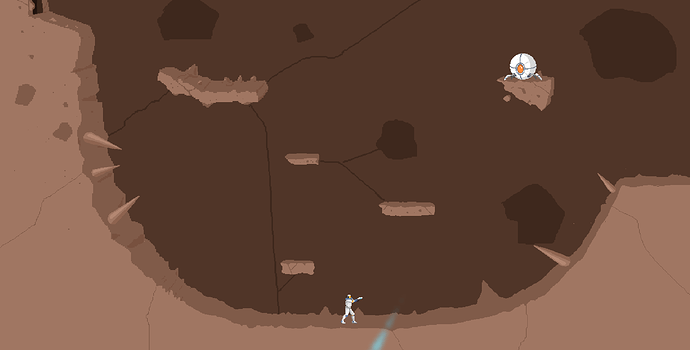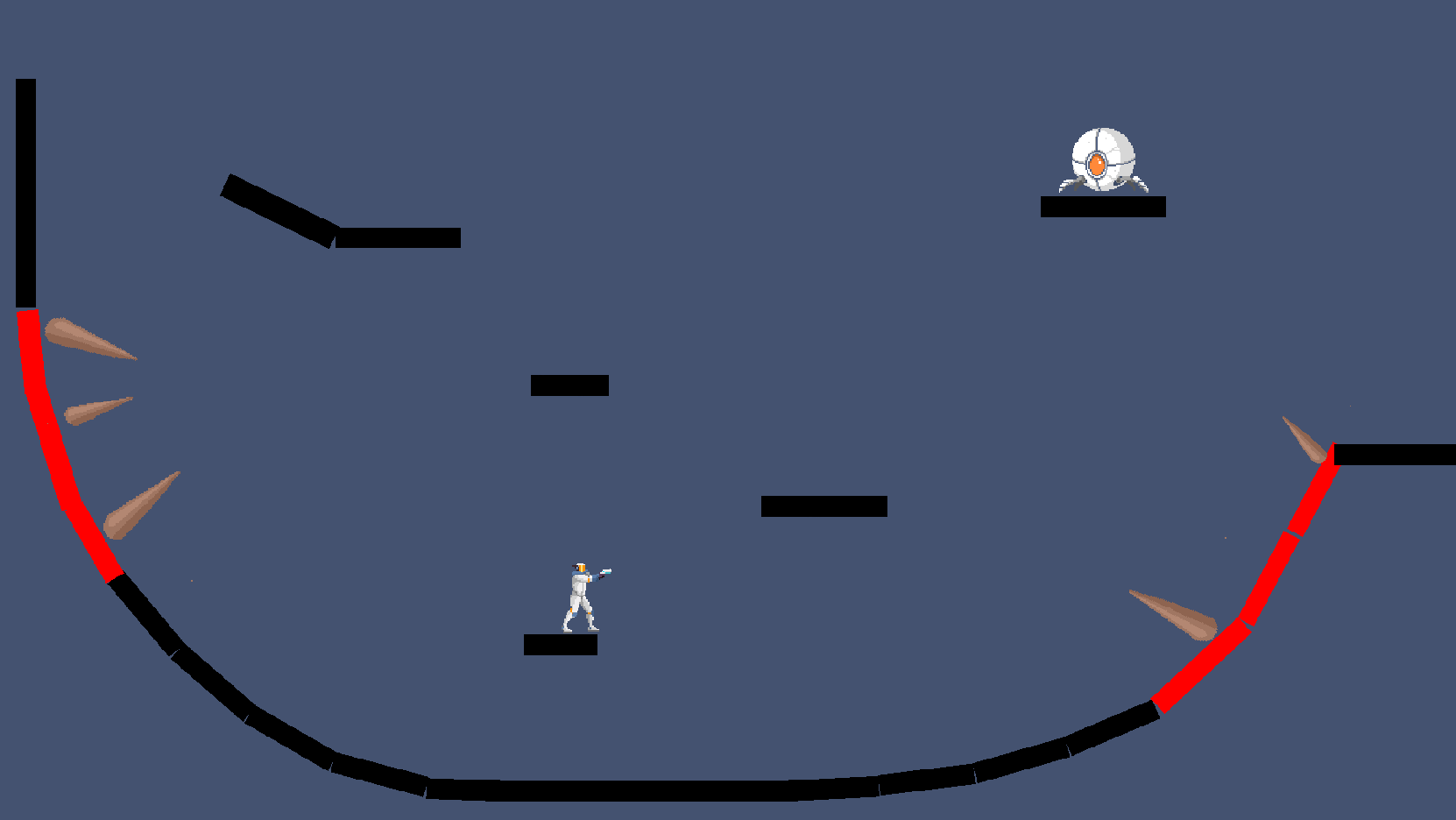I have a graphical issue. In my game, the character transforms into a ball (physical properties) to pass over curved platforms. I understood that Gdevelop doesn’t allow modifying the shape of the sprite like with Unity’s sprite shape or internally in Godot. The only solution I found is to create curves by assembling square platforms and drawing backgrounds on top of them. The problem is that when I have larger levels, it will be cumbersome to take screenshots of the game, assemble them in Aseprite, draw over them, then re-import a massive image back into Gdevelop (in a given format and possibly size). Is there another way to make curves in Gdevelop? By drawing each sprite, meaning all the different curve shapes? In your opinion, is my process the best method? Is there a way to export the entire image of a scene in a convincing resolution to allow me to adjust my graphics better? Thank you for your responses.
You can just place much walls to create th effeft or you go to the picture and select collision.
i would dig into this extension New extension: Hedgehog platformer by github-actions[bot] · Pull Request #1318 · GDevelopApp/GDevelop-extensions · GitHub
BUT IS NOT RELEASED YET…it will come soon i guess.
But you should be more interested in the example here
GDevelop 5
and how he made the curved surfaces
There is an action to save a screenshot, which I’m pretty sure will save the image in actual size.
Physics2.0 doesn’t support concave collision masks so making these curves out of pieces is the way to go. Can you draw the backgrounds first and then just place the platforms directly over them in the editor?
Indeed, I believe I mentioned the same possibilities in my comment. I was hoping to find out if there were any others. Thank you for your response.
Great, do you have a process for taking these screenshots? I’ve already tried using tutorials, but I haven’t found anything convincing on my end. The only method I’ve found is to take standard screenshots and assemble them in another software.
No, unfortunately, to properly manage jump distances and other game design issues, it’s more sensible for me to place the platform elements first and then draw over them afterwards.
Great, that sounds really good. If I understand correctly, it allows you to create collision layers separate from the tileset, which indeed isn’t possible with GDevelop’s standard tileset that has square collision shapes. I didn’t quite get how to set it up, but I’m excited for it to become available, as it could potentially save me a lot of time.
He used Tiled to create the curved surface since he loaded tmj files
Ok, thanks for your response. I’ve decided to go with tilemaps and handle platform collisions with square sprites since the tilemap object doesn’t support physics in Gdevelop.

